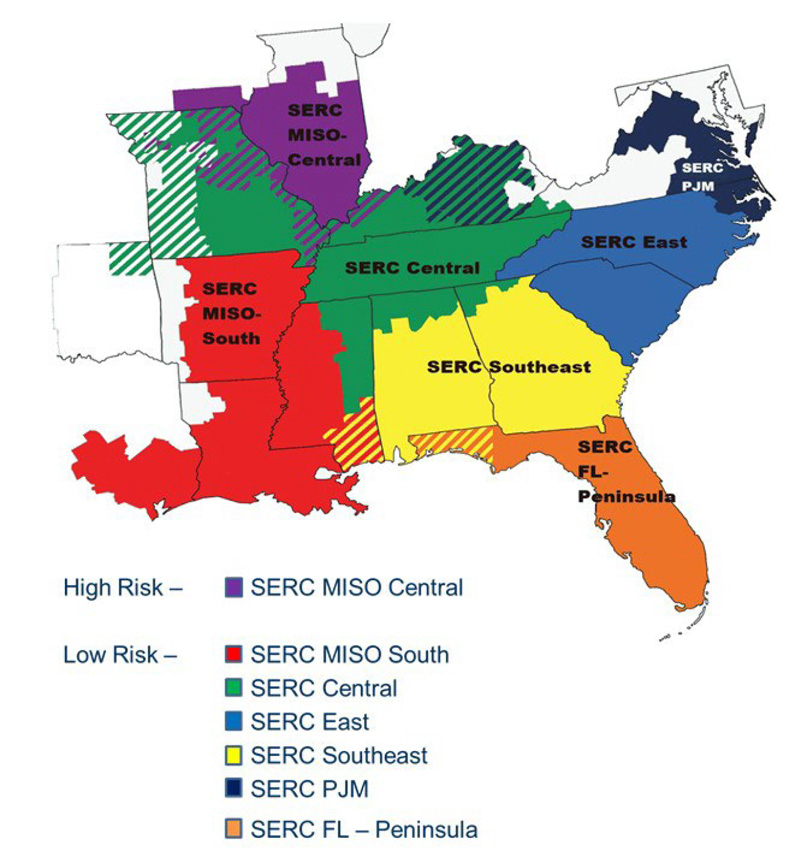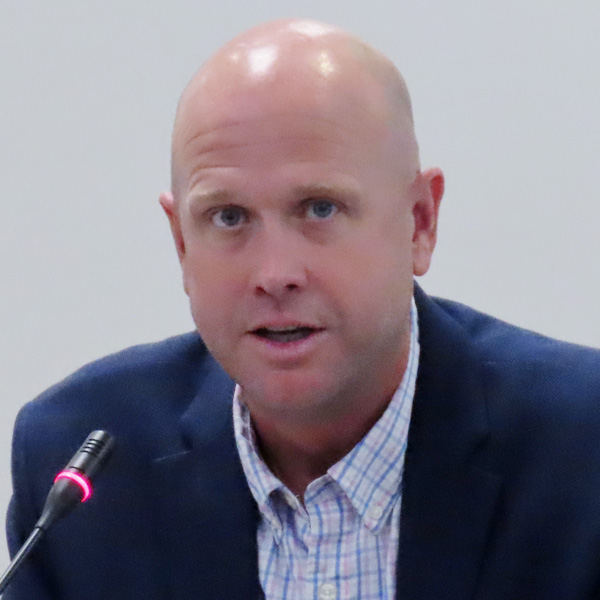[EDITOR’S NOTE: A previous of this version of this story incorrectly reported that NPRR1110 had increased the black start servicer procurement period from two to four years. The procurement period was actually increased to only three years. (See “Board Clears NPRRs” below.]
Maintenance Outage Scheduling Methodology Approved
AUSTIN, Texas — ERCOT’s Board of Directors last week took up two contentious issues between staff and stakeholders, resolving one and setting the other aside for the time being.
The board sided with ERCOT in approving staff’s proposed methodology for approving and denying planned generation maintenance outages, granting its appeal of a nodal protocol revision request (NPRR1108) that stakeholders passed in April. (See ERCOT Board of Directors Briefs: April 28, 2022.)
Staff said the rule change gives them much needed capacity and flexibility for planned outages while maintaining reliability. Stakeholders countered that the calculation limits outages when compared to history and that its assumed 10% growth rate for renewable resources is too low.
The Technical Advisory Committee “and staff are at loggerheads,” TAC Chair Clif Lange told the board. “We just wanted to raise these issues as areas we need to be looking at.”
The ERCOT methodology includes a maximum daily resource planned outage capacity (MDRPOC) calculation that sets the planned outages that should be allowed on each day of the next 60 months. Staff will review the methodology at least annually and work with stakeholders to make any necessary adjustments in allowing resources to schedule their maintenance outages. Any changes to the methodology will need board approval.
“We are providing a significant amount of outage availability,” interim CEO Brad Jones said. “We’re asking for some of [the outages] to be moved around. We’re trying to ensure not everyone takes these outages in October and late April.
Woody Rickerson, vice president of system planning and weatherization, told the board that the calculation’s installed inverter-based capacity is based on a 10th percentile score that allows room for growth.
“Ninety percent of the time, it’ll be higher in the future,” he said. “If we need more in the MDRPOC, we can change that. We’ve got some degrees of freedom that we can use in the future.”
Rickerson said staff conducted a backcast of the calculation against 2022 to determine whether they would have had to adjust the outage schedule. That would have happened three of four times, he said.
“That’s a pretty good number. We think we have this dialed in at the right amount,” Rickerson said.
The board again tabled NPRR1112, which would lower counterparties’ unsecured credit limit from $50 million to $30 million, over uncertainty of some of ERCOT’s numbers.
Jones said staff had “reason to believe” the numbers included some inaccuracies.
“We want to get them right and get them back to the board,” he said.
At issue is the amount of outstanding unsecured credit, currently $1.4 billion, that would be eliminated with the $30 million cap. Staff said dropping the cap would reduce the total to $400 million, but they could not definitively respond to Garland Power & Light’s Darrell Cline, speaking for TAC, when he said the reduction itself would be less than $400 million.
TAC will revisit the issue during its regular monthly meeting on Monday.
The directors agreed to again take up the measure during its August meeting. Should it pass the board then, it will become effective four months after Texas Public Utility Commission approval.
ERCOT last year proposed eliminating unsecured credit, but stakeholders countered with a revision request that would lower the limit to $30 million. After TAC approved the measure in April, ERCOT appealed the decision to the board, which tabled the measure later that month and requested information on other grid operators’ unsecured credit practices. (See “ERCOT’s Credit Limits Align with Others,” ERCOT Technical Advisory Committee Briefs: May 25, 2022.)
Staff found that all other ISOs and RTOs offer unsecured credit, limited to no more than $50 million per counterparty, and with no aggregate caps on the amount of outstanding credit. The grid operators’ total unsecured credit ranges from $100 million to $1.75 billion.
IMM: Out-of-market Actions Costly
Carrie Bivens, ERCOT’s Independent Market Monitor, clarified that the grid operator’s conservative operational posture this year has resulted in $216 million to $391 million in additional costs through its out-of-market actions.
Most of those costs come from the increased use of non-spin procurement and its effect on ancillary services prices in setting aside 6.5 GW in operating reserves each day. Increased reliability unit commitment (RUC) dispatch has only resulted in about $6 million in additional market costs, Bivens said.
The more frequent use of RUCs has added about $460 million year to date to the reliability deployment price adder. The adder is an indicator of the out-of-market actions’ impact on market outcomes and counters RUCs’ suppressive effects on energy prices, Bivens told RTO Insider.
She said the operating reserve demand curve (ORDC) has yielded about $900 million in market costs this year. The ORDC helps set prices in shortage or near-shortage conditions, the key to price formation in an energy-only market design, Bivens said.
The PUC last year lowered the ORDC’s clearing price from $9,000/MWh to $5,000/MWh and raised its minimum contingency level from 2,000 MW to 3,000 MW. The Monitor estimated shifting the curve has added about $476 million in energy costs by causing prices to rise more quickly at low shortage levels.
Bivens acknowledged to the Texas House of Representatives’ State Affairs Committee two days after the board meeting that most of those costs are passed on to consumers.
The PUC made the changes after market prices were stuck at the $9,000 cap for four days during the February 2021 winter storm.
In its annual State of the Market report released last month, the Monitor said ERCOT’s conservative operations approach runs counter to the energy-only market’s design. It said pricing outcomes have become “disconnected” from actual operational conditions in a market where high scarcity prices are designed to incent future investment in lieu of capacity revenues. (See IMM: ERCOT Conservative Operations ‘Not Compatible’ with Energy-Only Market.)
10 GW Thermals Could Retire with EPA Rule
Staff told the directors that its preliminary analysis of a federal rule limiting nitrogen oxide emissions assumed that over 10 GW of installed thermal generation would leave the market by 2026, requiring up to $1.5 billion to resolve local reliability issues.
The study assumed 10.8 GW of thermal generation, including 8.2 GW of aging coal-fired generation without scrubbers, would be retired. It added 20 GW of new generation, with only 4% representing thermal resources.
Rickerson said a steady-state transmission analysis showed the system would need $1.2 billion to $1.5 billion to “plug the holes left by the retirements.” He said an additional $2.7 billion to $5.2 billion could be needed to improve ERCOT’s regional transfer capability without the affected generation and that the probability of load shed in 2026 increases almost nine times when solar generation becomes unavailable.
Under EPA’s Cross-State Air Pollution Rule (CSAPR) federal implementation plan, NOx emissions budgets will be established for Texas and 25 other states, beginning with the 2023 ozone season (May 1-Sept. 30). The agency says the reductions are necessary to address upwind states’ interstate transport obligations.
Asked whether anyone would invest money in thermal plants that date back as far back as 1958, Rickerson said, “There’s a chance that could happen.” He said staff have been told that some plants simply don’t have the room for emissions-reduction equipment.
Public Utility Commission Chair Peter Lake said generation owners could face spending $200 million to keep 50-year-old plants in compliance. “So that’s pretty easy [as a decision],” he said.
The PUC, ERCOT and Texas’ environmental agency will all submit comments on EPA’s implementation plan, joining other grid operators and states in doing so. There were nearly 600 comments as of Friday afternoon.
Aguilar Resigns from Texas Central
Director Carlos Aguilar was a no-show for the board meeting, his first since resigning as CEO of Texas Central, the organization behind a proposed bullet train between Dallas and Houston.
Aguilar announced his resignation with a June 11 post on LinkedIn. He cited recent “news reports in the international press” for the announcement’s timing. Aguilar joined Texas Central as CEO in 2016.
The Federal Railroad Administration in 2020 approved plans for the 240-mile railroad. On Friday, the state’s Supreme Court ruled that Texas Central, which has affirmed its status as an operating company with the court, can use eminent domain to acquire land.
“Texas and the U.S. deserve the best transportation options, and I am convinced that in time, these will become a reality. We can do this,” Aguilar said in his post.
Board Clears NPRRs
The committee unanimously approved six NPRRs and a change to the planning guide (PGRR):
-
-
- NPRR1100: clarifies that a generator or energy storage resource (ESR) may serve customer load when the customer and the resource are both disconnected from the system because of a transmission or distribution outage. The change is limited to configurations where the resource and customer load are using privately owned transmission and distribution infrastructure during a private microgrid island operation.
- NPRR1110: modifies the black start service (BSS) confidential information, contract period and backup fuel requirements; increases the BSS procurement period from two to three years; and adds an on-site, 72-hour priority fuel requirement that can be waived in whole or in part to procure a sufficient number or preferred combination of resources.
- NPRR1119: deletes extraneous language that should have been removed as part of NPRR978.
- NPRR1121: automates the market notice used in the exceptional fuel cost submission process to notify market participants when the costs have been submitted for the operating day.
- NPRR1129: allows ERCOT to post on its website a list of electric service identifiers for transmission-voltage customer opt-outs from the securitization of $2.1 billion for load-serving entities’ extraordinary costs incurred during the February 2021 winter storm.
- NPRR1130: extends the sunset date for weatherization inspection fees from Sept. 1, 2022, to July 31, 2023.
- PGRR100: revises the annual planning model base case update frequency from triannual to biannual, aligning it with the Steady State Working Group’s plan to adjust its current case-building schedule to a biannual basis.
-


